When I previewed Immortals Fenyx Rising a few months ago, I was left with the impression that “I pretty much felt like I got it. How much was there to discover, really, when I feel like I’ve already played this game twice before? And with two massive, checklist-driven Ubisoft games coming out in October and November, do we really need another one so soon after?”
Now, having played Ubisoft’s new open-world adventure for this review, the answer to both questions is “somewhat more than I expected” and “no” respectively.
Before I tell you about Immortals Fenyx Rising, I want to meditate on timing. Timing really is everything, isn’t it? One of my favorite stories is about a Soviet duty officer named Stanislav Petrov who very literally saved the world by not reporting on an alert that a U.S. missile strike was about to hit the U.S.S.R. because he suspected that the attack warning was due to a system error. He was right, but it was lucky that he was the officer on duty at the time.
As it turns out, Petrov was the only one from his team with a civilian education, meaning the rest were trained soldiers who, more than likely, would have made the call to release the nukes. If it was someone else’s shift, we might have seen a nuclear war. What timing for a potentially disastrous system alert!
Of course, that also works the other way. Buying a ticket for the Hindenburg on May 6th, 1937, for instance, could be considered unfortunate timing.
I’m not comparing Immortals Fenyx Rising to the Hindenburg disaster. What I’m saying is, it might be a victim of bad timing.
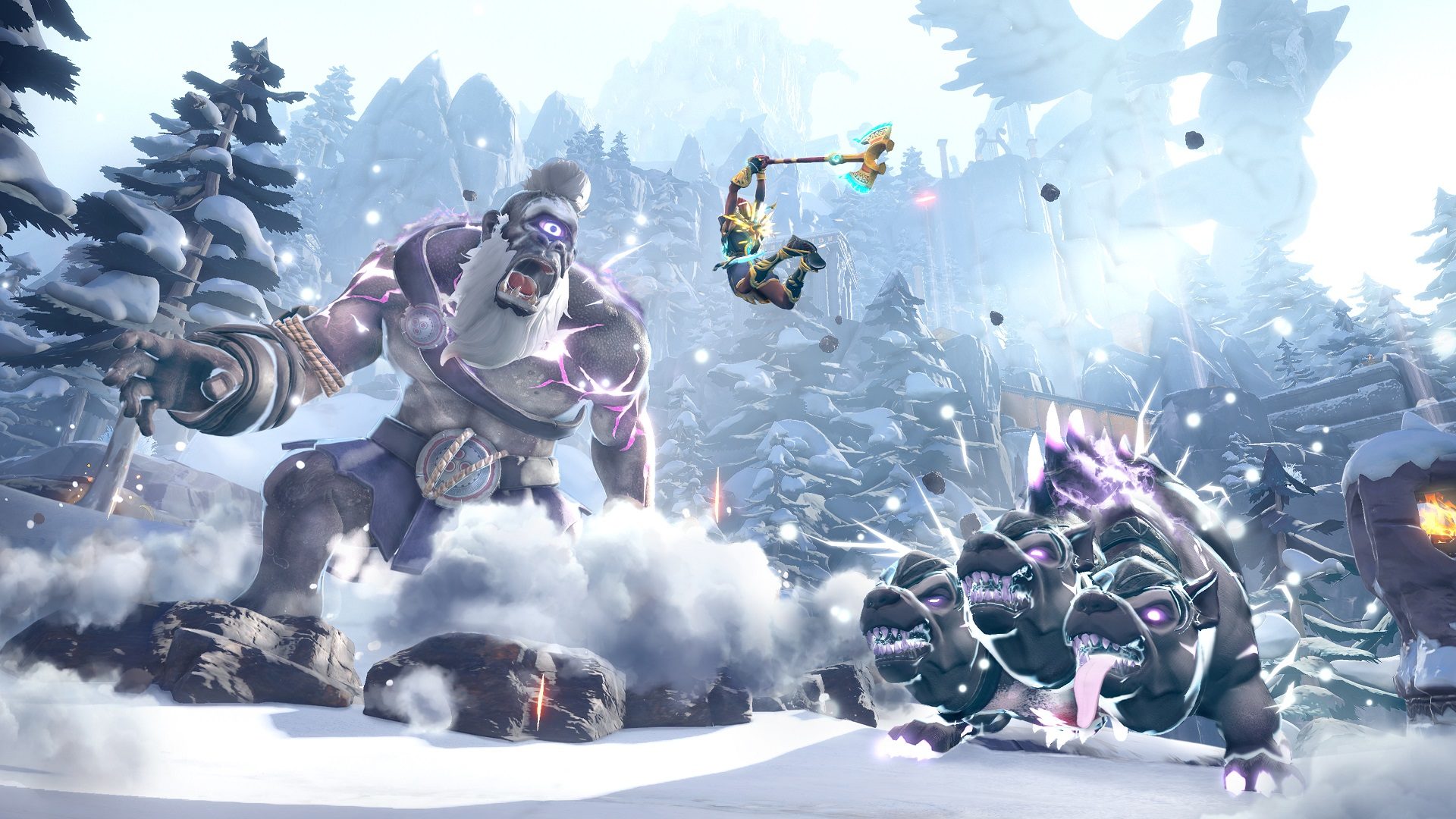
I’m writing this review the day after having Thanksgiving. Needless to say, I feel sluggish and unpleasant, my arteries heavy with grease and salt. In other words, I’m not feeling great or particularly magnanimous. In the days leading up to this, I have spent roughly 30 hours with Immortals Fenyx Rising. That’s after having spent about 30 hours with Watch Dogs: Legion and at least another 30 hours (so far) with Assassin’s Creed Valhalla within the last month or so. That’s a lot of Ubisoft open-world shenanigans in such a short amount of time, and the timing of the release of yet another open-world game, coming right after two of Ubisoft’s heaviest open-world hitters, doesn’t do Fenyx any favors.
There is such a thing as burnout, not just for the people making games, but for the people playing them as well. Yet Ubisoft’s penchant for dropping players onto a map that isn’t particularly convenient or fun to traverse and chickenpoxing that map with icons has somehow persisted despite the burnout many of its players experience anytime a new Far Cry or Assassin’s Creed hits the proverbial shelves.
My guess for how Ubisoft keeps getting away with this is because the time between the release of those games softens our view on Ubisoft’s open-world formula. (Or occasionally, as with Assassin’s Creed Odyssey, the developer creates something that’s undeniably charming.) But Fenyx doesn’t have that luxury, launching on the heels of two behemoths, and if I’m being honest, by the time I started it, I was already feeling fatigued by the formula.
But Fenyx isn’t just an iteration of the Assassin’s Creed Odyssey formula. It also apes The Legend of Zelda: Breath of the Wild, which against all odds injected something at least resembling novelty back into the open-world genre by making players discover the map icons on their own. And really, even if the timing was different, and this game launched a few months after Legion and Valhalla, I think that comparison alone is unkind to Fenyx because it doesn’t fully comprehend what made that specific Zelda game special in the first place.
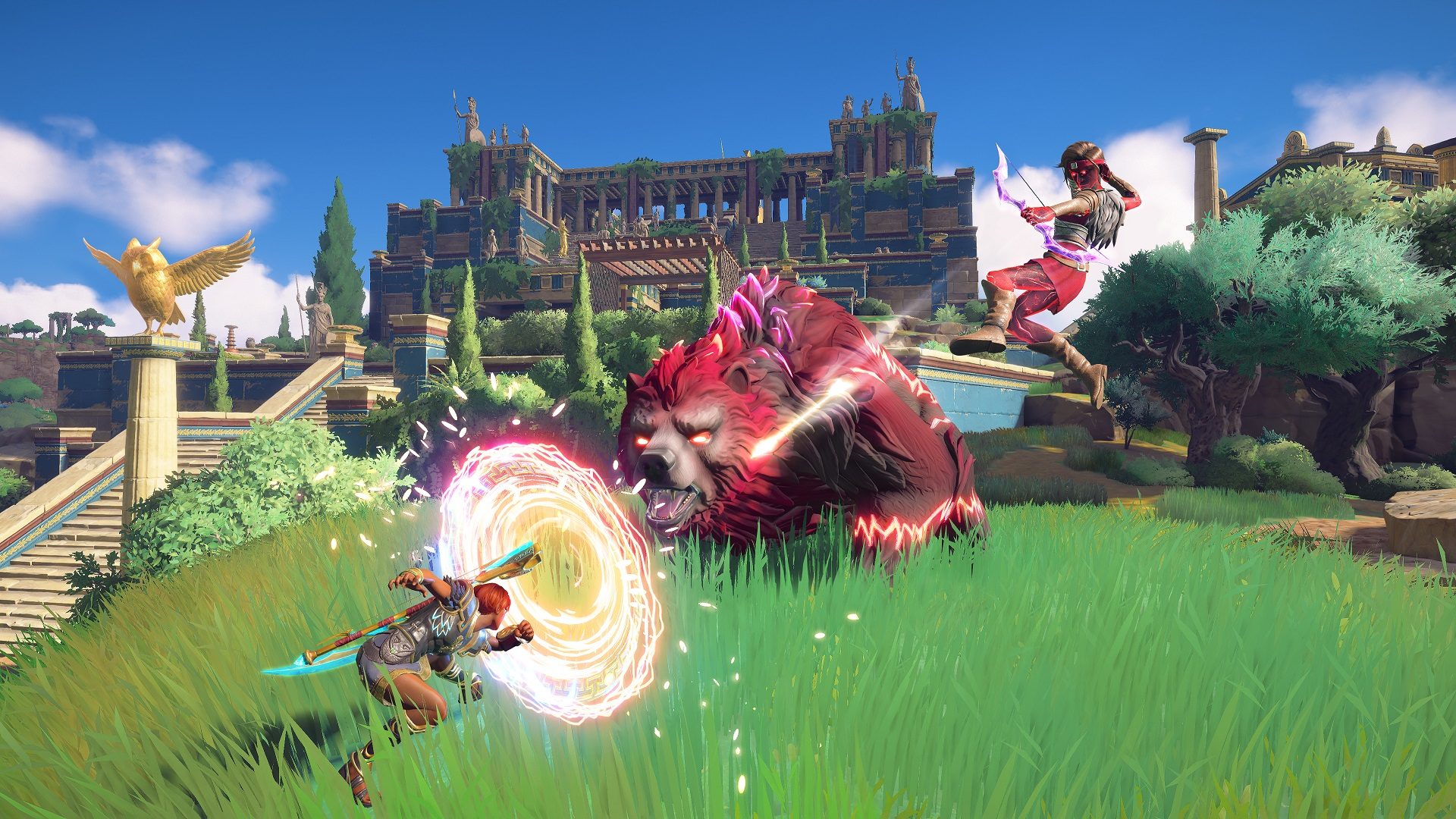
Part of the problem is that, similar to Breath of the Wild, nearly everything in Fenyx is tied to stamina. Climbing is tied to stamina. Gliding is tied to stamina. Using Fenyx’s special moves is tied to stamina. Double-jumping—the game’s best addition to its Breath of the Wild traversal—is in some cases ruined by being tied to stamina. And this stamina goes quickly. Yes, it also replenishes quickly, but there’s going to be as much starting and stopping in your journey as Los Angeles traffic at rush hour. You know, pre-pandemic.
What I don’t understand is why Fenyx needed stamina in the first place. It was already annoying in Breath of the Wild, but at least it made sense in context, given that it had elements of survival. Cooking food and braving the elements was part of the overall story. Fenyx isn’t in the slightest a survival game. It’s just an action-adventure game, so the inclusion of stamina when it comes to traversing the map feels like the first place where Ubisoft Quebec studied Breath of the Wild and missed the point.
Stamina works better in combat, where you don’t have to wait for an ability meter to fill up before you can unleash your powerful special attacks. As long as you have enough stamina, you can kind of go nuts, especially since you replenish stamina with every successful light attack landed (just like in Valhalla, which has stamina in combat but not in traversal and it has a special attack meter in the form of “adrenaline”). But when it comes to the already painfully slow process of traversing Fenyx’s Golden Isle, stamina just feels like a hindrance.
Another aspect of Breath of the Wild that Fenyx apes is its Shrines, which in this case are called Vaults of Tartaros. Like the Shrines, Fenyx’s Vaults are found throughout the world and function as self-contained challenges that reward you with a resource that makes you stronger. In this case, completing a Vault nets you Zeus’ lightning, which you can use to increase your stamina. The Vaults are mostly optional, though you will probably want to do as many as you can stomach to raise your stamina, thanks to challenges near the end of the game.
I say “stomach” because, unlike the Shrines, the Vaults can feel incredibly drawn out and repetitive. Sure, the Shrines always had variations on the same theme, but the Vaults in Fenyx repeat themselves, with challenges that seem designed to test the player’s patience rather than their cleverness or intellect. Usually, they involve transporting slow-moving objects from one point to another. Occasionally, you will fight things.
The best Vaults are the ones that function similarly to Breath of the Wild’s Divine Beasts, in that they lead to a boss fight and cap off a region. The challenges in these Vaults are unique and more complex, even if the Vaults themselves don’t have the cool, self-contained designs and consistencies of the Divine Beasts, which are built like the hulking machines that they are. Of course, there are only about five or six of these Vaults all told, and I still entered them with reticence, not knowing what kind of drudgery I was about to face.
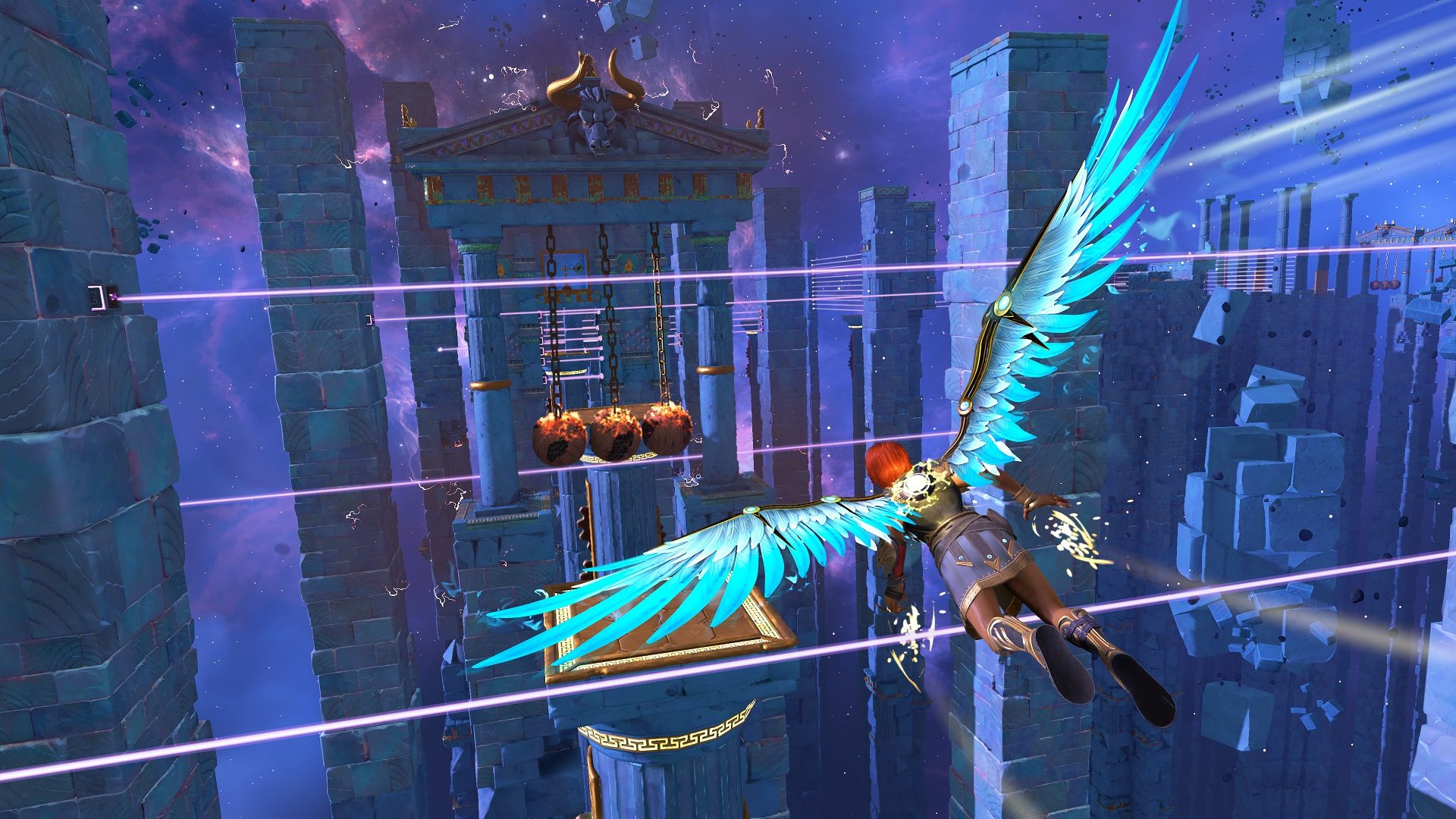
There’s one more thing about Breath of the Wild that Fenyx doesn’t seem to understand, and that’s how traversal can work to encourage exploration. Nintendo took the phrase “off the beaten path” quite literally in Breath of the Wild. While exploring required deviating from Hyrule’s complex system of roads, you could still rely on those roads to get you to where you needed to go. Fenyx’s Golden Isle isn’t so much a cohesive world but rather a jumble of cliffs and valleys with no discernible flow. The five main areas of the map feel distinct, at least aesthetically, but they also feel somewhat disconnected. This leads to you simply making a beeline for different points of interest, whether those are vaults, environmental puzzles, or treasure chests, which all pockmark your map. Simply put, it’s not a fun map to move around in.
Beyond that, while Hyrule felt like a lived-in world, the Golden Isle feels like a video game map. Part of the fun of exploring in Hyrule was coming upon secrets that gave more insight into the history and culture of the world; there aren’t those kinds of secrets in Fenyx, though you do unlock certain fun tidbits about Greek mythology (though anyone who had to read Edith Hamilton in high school is probably already familiar with them).
That being said, when it’s not forcing comparisons between itself and Breath of the Wild, Fenyx isn’t that bad. One area in particular where it stands out is with its overall narrative, which I found to be equal parts fun, insufferable, insightful, and downright cringe-worthy.
The setup is pretty simple: A Titan named Typhon, who Zeus imprisoned during the Titan War, escapes and steals the essence of Athena, Ares, Aphrodite, and Hephaistos, while laying waste to the rest of the Golden Isle with his army of monsters. Fenyx, whose ship wrecked on the Golden Isle and whose friends and brother all turned to stone, discovers that they are at the center of a prophecy to reunite the gods with their essences and team up to defeat Typhon. Meanwhile, Fenyx’s tale is told to Zeus by Prometheus, who Zeus similarly imprisoned, and the two of them provide commentary throughout the entire game.
While Fenyx (who the player can customize in both gender and appearance) is ostensibly the hero, the bulk of the emotional weight is carried by the four gods, Zeus, and Prometheus, and their relationship to one another. Ubisoft Quebec does an interesting thing with the gods, taking their mythological personalities and digging deeper to find their more human qualities and the psychological insecurities that their godly behaviors betray. As it turns out, most of these insecurities stem from their relationship to Zeus, their narcissistic blowhard of a patriarch.
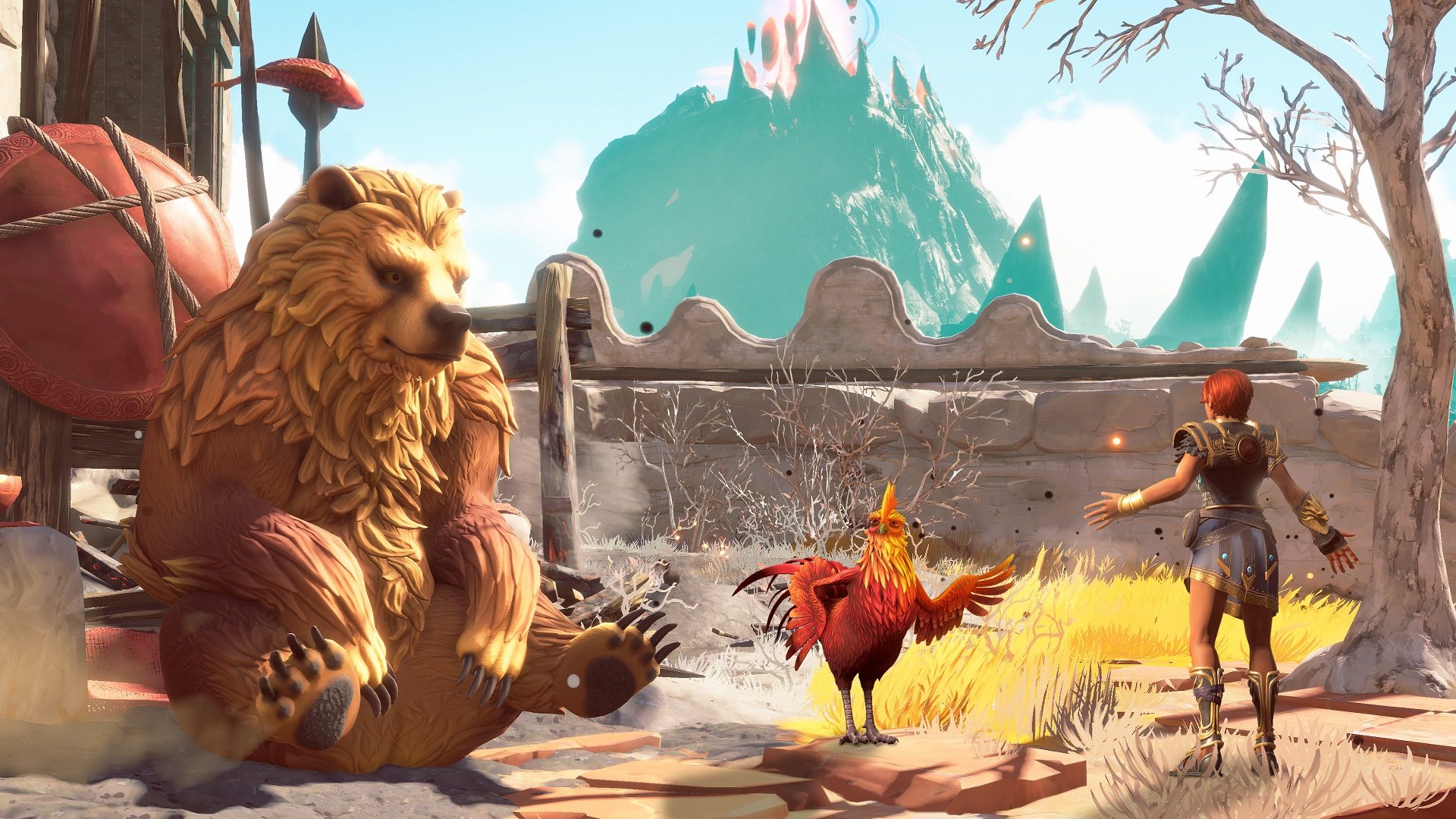
What’s really interesting about Fenyx’s story is that each of the gods’ essences tend to be the more toxic aspects of their personalities. Aphrodite’s self-centered pettiness, for instance, is what gives her the spark that makes her special, at least according to another god, Hermes. Ares’ anger and confidence is what makes him who he is. Fenyx has to convince the gods to reunite with their somewhat toxic essences to become whole.
At first, this might seem a little tone-deaf coming from Ubisoft, a publisher that has been in headlines recently for harboring many toxic personalities in key positions of its organization. It also seems like that old and dangerous cliché that mental illness is actually at the core of the individuality of those who suffer from such maladies, and seeking help and trying to treat these illnesses with medication and therapy is an attempt to stifle their individuality.
But Ubisoft Quebec approaches these topics with a little more care than that, in that the gods must both accept their toxic essences and learn from having lived without them in order to find harmony and become more self-aware. Zeus has potentially the biggest hurdle, but the story ends on a hopeful note, as you might expect from the game’s light-hearted and Fortnite-esque art style. Even though it can sometimes strike a cheesy, after-school-special tone, the story ended up having surprisingly compelling character moments throughout.
The other highlight is the game’s combat system. Refining Assassin’s Creed Odyssey’s melee mechanics, Fenyx constantly demands players juggle offense, defense, and special abilities to dispatch large groups of mythological monsters and slightly more mundane beasts. The basics are pretty simple: You have a sword for a light attack and an axe for a heavy attack, both of which can be upgraded separately. The axe is useful for opening up more defensive enemies and stacking stun damage, but upgrading the sword can turn Fenyx into a DPS machine. Likewise, landing attacks with the sword will replenish your stamina, which you’ll need to spend on your special abilities, which can also quickly stack stun damage, as does parrying incoming attacks.
The reason that Fenyx’s combat works so well is that it’s quick, responsive, and mostly fair. The enemies—though somewhat lacking in variety—have easily readable animations, and useful indicators will let you know when an enemy off-screen is queuing up an attack. The goal in most encounters, especially with larger enemies like cyclops and minotaurs, is to stun your foes, leaving them open to a massive amount of damage, or to at least give yourself some breathing room when facing off against a hoard. The ability to perform aerial attacks by jumping can also let you avoid certain attacks coming from the ground, and using this in tandem with special abilities can lead to some nasty combos.
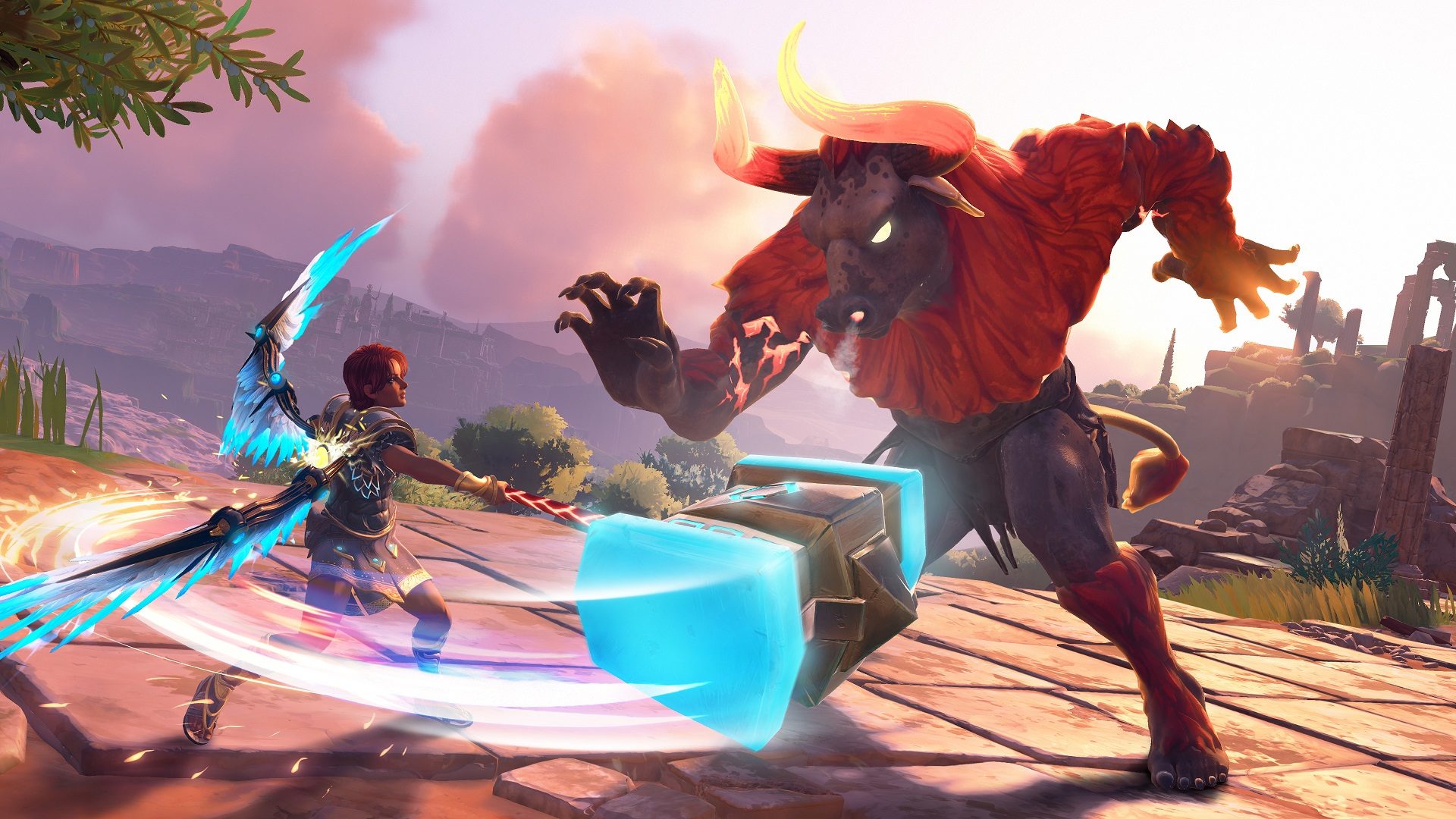
Speaking of combos, Fenyx offers a forgiving combat system. You can back off on an attack without losing your combo and the damage buffs that come with it; you only lose your combo when the enemies land an attack. This system lets you stay aggressive without forcing you to take unneeded risk just to keep the combo going, and it also opens up some strategic options. Taking out smaller enemies and raising your combo that way will let you bring those higher damage numbers to the larger enemies. In the end, the combat goes a long way in breaking up Fenyx’s monotonous elements.
While I want to write-off Fenyx as another one of Ubisoft’s formulaic open-world adventures, there are flashes of brilliance and individuality. Specifically, there is one extended sequence near the end of the game where players must find their way to the top of a snowy mountain. The more linear structure and pacing of this part of the game—in where it places its puzzles, enemy encounters, platforming segments, and climbing moments—is so good I wish the entire game played out like this. If Fenyx were one long, mostly linear climb up an even bigger mountain, with all of the game’s mechanics as they currently are, the game would have been way more compelling.
And then it hit me: Wait, was this the game that Ubisoft Quebec wanted to make? It’s a significant enough portion of the game, and different enough from the rest of the open-world stuff, that it very well could have been. After all, the Greek gods reside at the top of Mount Olympus. Wouldn’t it have made more sense for the entire game to take place there, with the various biomes taking place at different altitudes? Was this the actual game, until Ubisoft’s bigwigs stepped in and forced them to set it in a more standard open-world map? Ubisoft stated that much about the game changed between its E3 2019 reveal and its release, and it makes me wonder what the original vision was exactly.
I can’t promise that it’s entirely worth playing through the rest of Immortals Fenyx Rising just to get to its best moment, but I will say that that moment saved the game for me. Those particular couple of hours made the game stand out in a way that it wouldn’t have otherwise in this extended winter of being stuck inside and having nothing to play besides massive open-world games. And that’s good, because it’s not a bad game. It just has really bad timing.
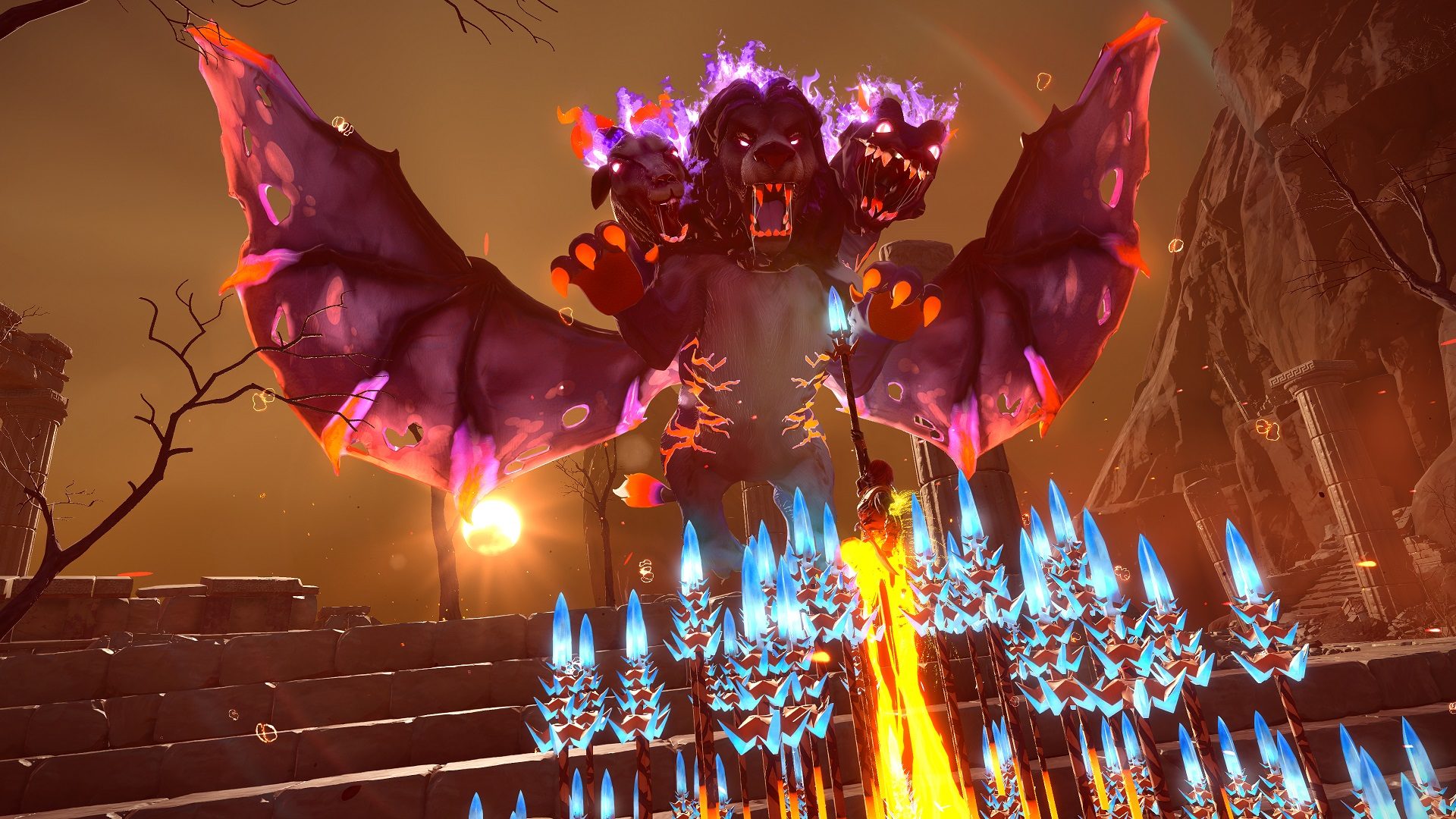
|
★★★☆☆
If it came out a few months ago or a few months later, Immortals Fenyx Rising might have stood out more. But the problem is that it’s coming after a gauntlet of better Ubisoft products without doing much to improve upon the formula. Sometimes, it actively works against itself in what it’s decided to steal from Breath of the Wild, too. However, its surprisingly engaging story and a late-game trek up a mountain save it from being entirely lost to history. |
Developer Ubisoft Quebec Publisher Ubisoft ESRB T - Teen Release Date 12.03.20 |
| Immortals Fenyx Rising is available on Xbox Series X|S, PlayStation 5, Xbox One, PlayStation 4, Nintendo Switch, PC, and Google Stadia. Primary version played was for Xbox Series X. Product was provided by Ubisoft for the benefit of this coverage. EGM reviews on a scale of one to five stars. | |

Michael Goroff has written and edited for EGM since 2017. You can follow him on Twitter @gogogoroff.